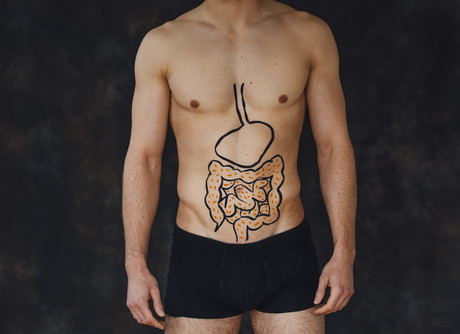Interspecies communication in the gut

Move over sci-fi — interspecies communication is already going on in your gut and it’s the bacteria, not you, that are the boss.
Not only do bacteria in the gut help digest food they also communicate with their mammalian hosts and actually tell them what to do.
A study published in Cell describes a form of ‘interspecies communication’ in which bacteria secrete a specific molecule — nitric oxide — that allows them to communicate with and control their hosts’ DNA, and suggests that the conversation between the two may broadly influence human health.
The researchers out of Case Western Reserve University School of Medicine, University Hospitals Cleveland Medical Center and Harvard Medical School tracked nitric oxide secreted by gut bacteria inside tiny worms (C. elegans, a common mammalian laboratory model). Nitric oxide secreted by gut bacteria attached to thousands of host proteins, completely changing a worm’s ability to regulate its own gene expression.
The study is the first to show gut bacteria can tap into nitric oxide networks ubiquitous in mammals, including humans. Nitric oxide attaches to human proteins in a carefully regulated manner — a process known as S-nitrosylation — and disruptions are broadly implicated in diseases such as Alzheimer’s, Parkinson’s, asthma, diabetes, heart disease and cancer.
The findings suggest nitric oxide is a general mechanism by which gut bacteria can communicate with mammalian hosts. Previous work to untangle communication lines to and from gut bacteria has primarily focused on rare molecules that bacteria secrete. The new findings are akin to uncovering a chemical language common across species, as opposed to single words.
The researchers demonstrated the phenomenon by feeding developing worms bacteria that produce nitric oxide. They then selected one very important protein — argonaute protein, or ALG-1 — that is highly conserved from worms to humans and silences unnecessary genes, including genes critical for development. When nitric oxide secreted by the bacteria attached to ALG-1, they developed malformed reproductive organs and died. Too much nitric oxide from bacteria commanded the worms’ DNA silencing proteins and impaired healthy development.
“Practically, animals will not let this happen,” said senior author Jonathan Stamler. Instead, the authors speculate a mammalian host outside of a laboratory setting will adjust to accommodate changing nitric oxide levels. Said Stamler, “The worm is going to be able to stop eating the bacteria that make the nitric oxide, or it will begin to eat different bacteria that makes less nitric oxide, or change its environment, or countless other adaptations. But by the same token, too much nitric oxide produced by our microbiome may cause disease or developmental problems in the foetus.”
The study adds to a growing body of evidence that bacteria living in the gut, determined by diet and environment, have a tremendous influence on mammalian health.
Stamler imagines nitric oxide may represent an opportunity to manipulate this symbiotic relationship. Just as probiotics are designed to improve digestion, inoculating a person’s gut with bacteria to improve nitric oxide signalling is conceivable.
Mimicking meat: texture science for plant-based meats
Stanford engineers are developing an approach to food texture testing that could pave the way for...
What's new on the shelf in the lead-up to Christmas
Chocolate baubles, fruity snacks, Milkybar milk and instant coffee with a cool twist are some of...
A vision of a food trend
Research at the University of Sydney tested the reactions of more than 600 people making food...










